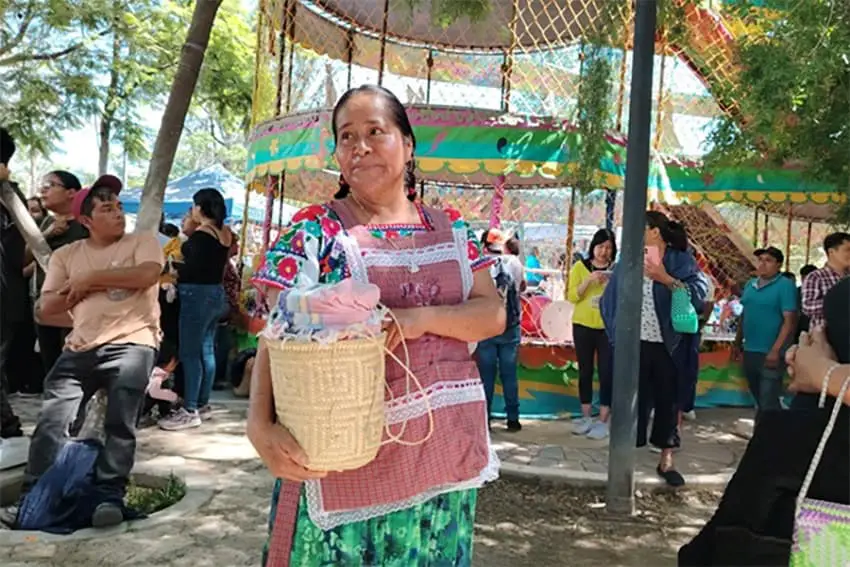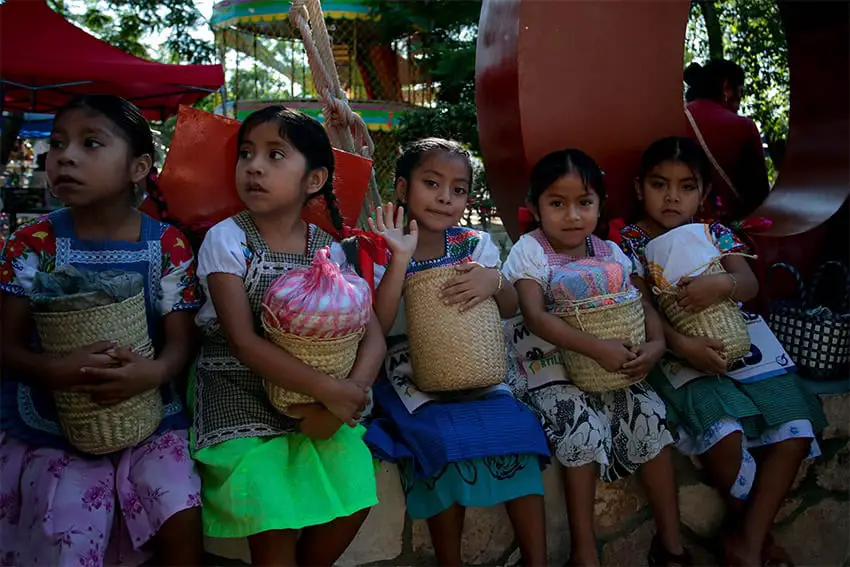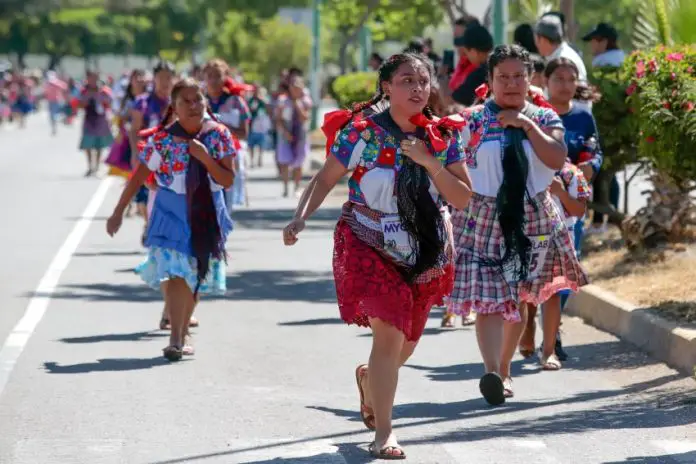With a satchel of tortillas on their back, more than 300 women and girls participated in the 30th edition of the annual five-kilometer Tortilla Race on Sunday in the state of Puebla.
The Carrera de la Tortilla began in the heart of Tehuacán, Puebla, and finished in the community of Santa María Coapan — known as the “Tortilla Capital” for its handmade corn tortillas of a size and texture different from most others.
A Coapan community tradition
Among the community’s population of 10,000 women, approximately 50% participate in the preparation of tortillas. Most of the women are of Nahua origin.
The satchels of tortillas weighed between one and six kilograms, depending on the runner’s age, which spanned from 4 to 70. Many children ran for the first time, and some of the runners also carried their babies in a rebozo, or traditional sling.
The race honors the four to five kilometers that the women walk every day to reach the markets of central Tehuacán, in addition to walking the streets to sell their tortillas and other snacks. Some of the “Coapeñitas” — women from Santa María Coapan — ran with sandals, others in their bare feet.
In 2023, the winner was a 12-year-old girl, but this year the winner was 50-year-old Margarita Felipa Flores of the veterans category. Carrying three kilos of tortillas on her back, she completed the course in 24 minutes.

Flores returned to the race after sitting out for 10 years. Afterward, she delivered a message to women, stressing that “anything is possible if one wants it.” She also asked for unity in the community so that the tradition of the race can continue.
Who should be in charge of the Tortilla Race?
This year, the race was in danger of being called off due to a dispute between members of the Coapan community and government officials in the Tehuacán municipality, in which Santa María Coapan is located.
Community members claimed the Tehuacán City Council had appropriated the tradition of the race and attempted to “folklorize” it to attract tourism. Many of the participants wear huipiles with embroidered flowers and colored threads, with a wide skirt and an apron tied at the waist.
With more and more spectators and outside runners showing up every year, organizers had to add a new “recreational category” last year to prevent a non-local from taking an award away from one of the local participants.

Coapan residents filed a complaint saying that the community should once again organize the Tortilla Race, as it originally did. A district court made a provisional ruling in their favor based on the Federal Law for the Protection of the Cultural Heritage of Indigenous and Afro-Mexican Peoples and Communities.
Soledad Nicolás Gutiérrez, a lawyer working on behalf of the women, said that when municipal authorities took over the planning, locals began to be excluded.
After the ruling, a committee made up of women from Santa María Coapan organized this year’s race.
Nicolás Gutiérrez said the race represents “the pride of being from” Coapan, and the craft of processing corn every day and marketing their products in Tehuacán. “How we carry out this craft is how our ancestors handed it down to us.”
She also explained that the trial is still ongoing, and that municipal authorities are doing their best to discredit the women in their attempts to seize control of the race. Moreover, the Tehuacán City Council held back funds for this year’s race, instead allocating that money to the municipality’s Corn Festival. The municipality used to schedule the corn festival to coincide with the race, but held it separately this year.
“What a shame for the mestizo [Spanish-Indigenous mixed race] authorities,” one person posted as a comment in the news magazine Proceso. “They want to control everything to fill their pockets, and they push aside the owners of the ancient culture.”
With reports from Urbano Puebla, Milenio, Proceso, El Sol de Puebla and EFE
